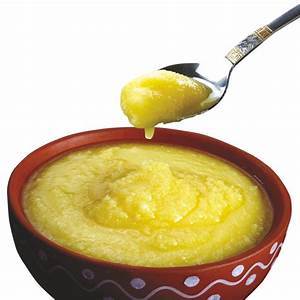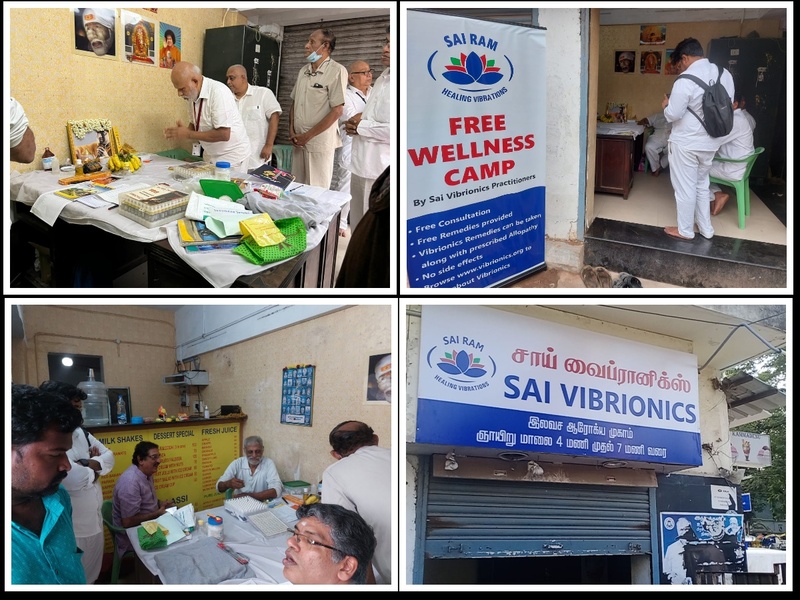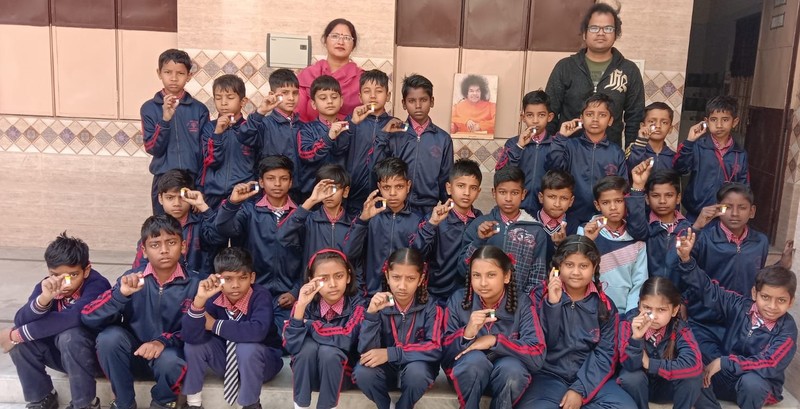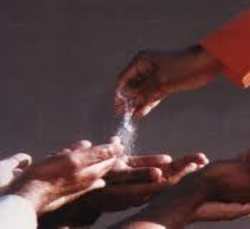In Addition
Vol 14 Issue 2
March / April 2023
Health article
Milk – To have or not to have!
“Some people are under the mistaken impression that satvic food should consist of only milk, yogurt, sweets, and fruits…they will become satvic by consuming large quantities of these delicacies. They are absolutely mistaken. Excessive and immoderate consumption of milk and its products awakens and aggravates the rajasic and tamasic qualities in man. A diet extra rich in milk, curd, and ghee cannot be called satvic because it leads to the development of the passionate nature of man.” … Sathya Sai Baba1
Prelude: There have been health articles on nutritive fruits, vegetables, nuts, grains, spices, oil, and so on in the previous issues of our Newsletter. This article explores the benefits and possible side effects of consuming milk as well as the alternatives available. Traditionally glorified as satvic food, the goodness of milk has become debatable over the years because of the evolving methods of mass-scale production and the treatment meted out to the milk-giving animals and their offspring. In Ayurvedic thought: good milk is like pure plasma that nourishes all the tissues. Poor-quality milk is like pure mucus which is a waste product of plasma.2
1. Benefits of milk
From time immemorial milk is regarded as nature’s most unique and complete food, an invariable part of our daily diet from infancy to old age.
1.1 Milk from indigenous, healthy, grass-fed cows, unpasteurised and unhomogenised, is known to contain all the easily absorbable nutrients in balanced proportion: water (88%), protein (mainly  A2 beta-casein and whey), milk fat, carbs (lactose known as milk sugar), minerals (esp. calcium), vitamins B and D, pigments called carotenoids, and enzymes. Cow milk has been found curative for dry cough, bleeding from lungs, ulcers, infertility, and lack of vitality. But, there are varied studies and reports cautioning about its increasing A1 beta-casein protein content, considering its toxic side effects, as compared to the health benefits of A2 protein found in other animals’ milk!2-6
A2 beta-casein and whey), milk fat, carbs (lactose known as milk sugar), minerals (esp. calcium), vitamins B and D, pigments called carotenoids, and enzymes. Cow milk has been found curative for dry cough, bleeding from lungs, ulcers, infertility, and lack of vitality. But, there are varied studies and reports cautioning about its increasing A1 beta-casein protein content, considering its toxic side effects, as compared to the health benefits of A2 protein found in other animals’ milk!2-6
1.2 Milk from other animals:
Buffalo milk containing only A2 beta-casein protein, richer in fat, calories, and minerals is considered one of the healthiest foods, creamy, and ideal for curd and cottage cheese.7,8
Camel milk is similar to cow milk, saltier, three times richer in vitamin C, and prevents malnutrition. It is also used to treat autism and diabetes. Most suitable for people in arid and semi-arid regions, it is expensive and not easily available in many regions.9,10
Goat milk is becoming popular worldwide being rich in A2 protein and calcium, low in lactose, and easy on the gut. Unlike cow’s milk, it enhances the body’s ability to absorb important nutrients from other foods. The nutrient composition is such that it is appropriate for older children, not for infants. When heated, pasteurised, or processed, it will have a distinct goat flavour.11,12,13
Sheep milk is considered richer in A2 protein and fat, delicious, more nutritious, and easily digestible than cow and goat milk. Important for people in the Mediterranean region, most of this milk is processed into cheese. Other choices are yak milk (similar to that of buffalo) and equine milk comprising donkey milk (boosts immunity and maintains blood pressure; also used in moisturisers for flawless skin) and horse/mare’s milk (eliminates toxins and boosts stamina).14,15,16,17
1.3 Raw milk from cows and other animals is closer to human milk and very healthy for immune, skeletal, digestive, and neuro systems, also skin, hair, and nails. Its hygienic quality is of crucial importance. Ideally, it should be fresh from genuine organic farms preferably from grass-fed animals raised in humane conditions.18-20
Caution 1: Unpasteurised raw milk is considered unsafe by health experts for fear of infection due to milk borne pathogens; strictly regulated in some countries like USA, UK, and Canada. Pasteurisation involves heating the milk to kill any germs in it and increase its shelf life.2,3,20,21
Caution 2: People for the Ethical Treatment of Animals (PETA) advise against any animal-based milk including goat milk as animals produce it for their own little ones and not humans. Above all, they emphasise the cruelty to animals and their offspring.22
2. Can human beings digest milk - the flip side!
No mammals are known to drink milk beyond childhood; nor do they suffer from osteoporosis, except the occasional pet raised on human meals. Studies show only children below the age of three have the necessary enzymes to digest milk completely. After a child is weaned from breast milk, the mother gradually stops producing the milk-digesting lactase enzyme. The undigested milk protein molecules in the body form mucus, get absorbed into the blood system and also get deposited in different organs, especially the lower organs due to gravitational pull. This causes serious gastrointestinal (GI) issues, heart disease, as well as tumour or cancer. The inability to digest milk has come to be known as lactose intolerance. However, many people due to possible genetic mutation continue to produce lactase throughout adulthood to digest milk, a trait known as lactase persistence.23-27
Homogenisation of milk involves reducing and breaking down its fat globules and smoothening to make it white and creamy. This way milk stays fresh for a longer period and is easily digestible too. But the flip side is the tiny fat globules can easily get absorbed into the bloodstream directly causing harm to our health; also it reduces the nutrient value, especially vitamins A and D.28
3. Progressive toxification of milk – a big concern!
There are many standards and codes for milk products laid down by the Food and Agriculture Organisation of the UN. But modern feeding methods, cross-breeding, the use of hormones and drugs to increase milk production, and antibiotics to keep them free of infections have transformed healthy milk into allergens and carcinogens bereft of the natural enzymes and butterfat necessary to make milk bioabsorbable. This has led to respiratory problems, skin allergy, and recurrent ear infections in children, not to mention gastric problems. It has also been linked to insulin-dependent diabetes, rheumatoid arthritis, infertility, and leukaemia. A2 milk protein originally found in dairy (as in human milk) has through mutation in the European herd led to the formation of toxic beta-casein  protein. Studies suggest that BCM-7, an opioid peptide is released while digesting A1 protein, affecting the immune and GI systems causing many serious health conditions, including autism, Parkinson’s disease, and schizophrenia.5,6,29-32
protein. Studies suggest that BCM-7, an opioid peptide is released while digesting A1 protein, affecting the immune and GI systems causing many serious health conditions, including autism, Parkinson’s disease, and schizophrenia.5,6,29-32
Traditionally cattle were treated as family with love, warmth and respect. Cow’s milk was first given to her calf and the remaining milk was used for human consumption. This helped her to be happy, promoting the nutritive quality of milk. Now when dairy calves are taken away abruptly for whatever reason, the mothers’ distress creates toxins in the milk.2,33
4. Plant-based milk and calcium – An alternative!
Plant-based milk from cereals, grains, nuts, seeds, and legumes can be explored as healthier, cruelty-free, and lactose-free options, though some nutrients get lost in the milking process. Mineral-rich coconut milk, a miracle liquid, builds immunity and prevents disease. Others include calcium-rich almond milk, home-made naturally sweet cashew milk, macadamia nut milk rich in calories, vitamins, and fatty acids, apt for coffee drinks; nutritive soy milk and its curd tofu, an incredible food; fibre, calcium, and protein-rich oat milk, good for lowering blood sugar; home-made super creamy banana milk, carb-rich rice milk, and protein-rich pea and hemp milk.4,34-36
Other simpler sources of calcium are: a handful of overnight soaked raw groundnuts; germinated or sprouted horse gram, ideal in cloudy rainy weather to be balanced by sprouted green gram when the sun is up. One study reports a 28% drop in the risk for heart disease when calories from full-fat dairy products were replaced with carbohydrates from whole grains.23,36
Caution 3: While purchasing, check and satisfy that alternatives to milk are not genetically modified. They should be sugar-free and fortified for the missing nutrients.
5. Be careful in consuming milk and its products
- Choose the kind of milk that suits the individual’s body and health condition: either whole milk with original fat content, virtually fat and calorie-free skimmed milk with full nutrients of whole milk, or toned milk (an Indian concept) made by diluting whole buffalo milk by adding skimmed milk and water.
- Opt for A2 milk or lab-modified lactose-free milk
- Refrigerate as it is a perishable food, susceptible to microbial spoilage
- Use diluted milk as it is easier to digest.
Warm milk cures and cold milk causes disease. Avoid very hot as it may lead to thermal burns in the sensitive oesophagus tissues. Warm milk with ghee is a natural laxative. The mucus-creating property of milk should be antidoted with spices like cardamom, dry ginger, turmeric, or cinnamon to prevent cold and cough. Warm milk with a pinch of nutmeg is a good home remedy for insomnia.
- Ice cream is a difficult dessert as the cold suppresses the digestive fire, especially after a meal.
- Home-made fresh curd, yogurt, kefir or buttermilk, fermented products are the best way to consume dairy. They provide calcium, vitamin B12 and keep the skin moisturised. Avoid fermented dairy at night.
- Butter is good for people with strong digestion; applied externally, it helps with burns and skin rash.
- Raw and unsalted clarified butter called ghee is good for most, especially with a meal. Considered excellent for mental work, ghee increases strength, vitality, and awareness; it
 also counters fever and infection. When kept in a copper vessel and applied to the skin, it gives relief from rash and skin inflammation. When used as lamp oil, ghee purifies the environment, makes it conducive for meditation.
also counters fever and infection. When kept in a copper vessel and applied to the skin, it gives relief from rash and skin inflammation. When used as lamp oil, ghee purifies the environment, makes it conducive for meditation. - Cheese is heavy, often sticky and hard to digest. Go for cottage cheese or milder sweeter-tasting vegetarian cheese with little or no salt.
- Do not combine milk with fruits which digest more quickly; the milk will go to the intestine with the fruit without getting digested in the stomach.
- Limit usage per day to a cup of milk as per the target set by “planetary health diet” for good health and eco-friendliness, reducing the carbon footprint on earth! Milk intake in excess can lead to indigestion, clog the channels of circulation, and lead to osteoporosis. Countries with the highest dairy consumption lead the world in rates of osteoporosis.2,4,5,24,35,36
6. Final word
Eat and drink joyfully, in moderation for good health! Be comfortable and conscious of what you consume, taking into account your health condition and the recommended diet but without making it a life-restricting philosophy.
References & Links
- Sathya Sai Speaks, Summer Showers in Brindavan, 1979, Chapter 17.
- Cow milk benefits with care: Ayurvedic Dairy: The Raw Story on Milk, Yogurt, and More (yogainternational.com)
- https://www.healthline.com/nutrition/milk#nutrition
- https://www.hsph.harvard.edu/nutritiounsource/milk/
- https://www.fedup.com.au/factsheets/additive-and-natural-chemical-factsheets/a2-milk
- https://www.medicalnewstoday.com/articles/318577
- Buffalo milk: Buffalo Milk: Nutrition, Benefits, and How It Compares (healthline.com)
- Where to Buy Buffalo Milk in the UK (naturaler.co.uk)
- Camel milk: 6 Surprising Benefits of Camel Milk (And 3 Downsides) (healthline.com)
- https://camelmilk.com/blogs/milk/surprising-came-milk-health-benefits
- Goat milk: https://draxe.com/nutrition/goat-milk/
- https://lybrate.com/topic/goat-milk-benefits
- https://healthline.com/health/benefits-of-goat-milk
- Sheep milk: https://www.organicfacts.net/sheep-milk.html
- https://sheepcaretaker.com/sheep-milk-nutrition-facts/
- Other animal milk: https://advitree.com/best-animal-milk-for-human-consumption/#
- Dairy production and products: Milk composition (fao.org)
- Raw milk: Raw Milk Safety Interview with Dr. Mercola (willwinter.com)
- https://draxe.com/nutrition/raw-milk-benefits/
- https://www.bbc.co.uk/food/articles/raw-milk
- https://www.webmd.com/diet/raw-milk-health-benefits
- 12 Reasons Never to Drink Goat's Milk | PETA
- Can You digest milk?: 4 Foods to Avoid for a Healthy Lifestyle (sadhguru.org)
- Effect of undigested milk: Dietry Principles | Kriyayoga Meditation (kriyayoga-yogisatyam.org)
- Lactose intolerance - Symptoms and causes - Mayo Clinic
- https://news.stonybrook.edu/newsroom/study-reveals-lactose-tolerance-happened-quickly-in-europe/#
- Evolution of lactase persistence: an example of human niche construction - PMC (nih.gov)
- https://homogenisation.org/advantages-and-disadvantages-of-the-homogenising-milk/
- Dairy production and products: Codex Alimentarius (fao.org)
- Processing Milk (mercola.com)
- Dairy and ear infections: is there an association? | NutritionFacts.org
- Why modern day milk is termed as white poison?! – #Thinkhealth blog (ekincare.com)
- Mother Helplessly Chases After Her Stolen Calves in Heartbreaking Video | PETA
- Plant based milk: https://www.cnet.com/health/nutrition/what-is-the-best-plant-based-milk/
- https://www.nutritionadvance.com/types-of-milk
- https://foodrevolution.org/blog/milk-substitutes/
2. Vibrionics Seminar at Delhi, 4 Feb 2023
After a four-year hiatus, there was much to share at the day-long face-to-face seminar conducted at Sri Sathya Sai International Centre, Delhi, for the practitioners in Delhi, Uttarakhand, and other nearby regions. It was graced by Mrs. Hem Aggarwal and Dr Jit Aggarwal who gave invaluable inputs on how to deal with difficult cases, how to do one’s best as a practitioner with a positive frame of mind and love, importance of prayers, and the need to connect to Swami and leave the results to Him. Dr Aggarwal also revealed plans for expansion of Sai Vibrionics including the steps taken for the upcoming Sai Vibrionics Institute for Research and Training in Puttaparthi (see “From the Desk” for details and updates) . The participants expressed their delight and appreciated the efforts put in by the founders and his task teams to take vibrionics forward.

3. Camps & Clinics
a, Weekly clinic at T Nagar Chennai, Tamil Nadu
With Swamis’ Divine Blessings, the tireless efforts of the practitioners with the support of some eminent devotees in Chennai resulted in starting a weekly Vibrionics camp from 9 Oct 2022 in a premises generously extended by a devotee who happens to be a member of the Tamil Nadu Sri Sathya Sai Trust. Inaugurated on the auspicious Vijayadashami day on 5 Oct 2022, the clinic is managed by a team of dedicated practitioners11586, 11599, 11605, 11616, 11639 by turns, ably assisted by an AVP applicant. As the clinic progressed, it was visited by some employees of the nearby Pothys Hyper Mart, which is a chain of textile showrooms in South India. This led to a request from their organisation for IBs for all the 400 employees of that showroom which was done. Till end of Feb, the clinic has treated 194 patients in all.

b. Awareness camp, Chandigarh, India
On 7 Dec 2022, practitioners 02816 and 11641 held a vibrionics awareness camp at SGS Public school, in Halloo-Majra village on the outskirts of Chandigarh. In addition to giving an awareness talk to staff and parents, the senior practitioner attended to 9 patients with chronic ailments and 250 IB bottles were distributed. The attendees requested for an appointment-based clinic at the school and a regular monthly camp. During the Jan camp the feedback on IB was overwhelming. Even though it was the peak of winter, a season for respiratory ailments, absenteeism in school had reduced; some patients reported 30-40% improvement in their chronic throat issues which PGI, their premier health institute, had not been able to help them with. During Feb, CC15.1 Mental & Emotional tonic + CC17.3 Brain & Memory tonic was given to 70 students, slow learners as identified by their teachers.

4. Anecdote
Difficulty with conception resolved with vibrionics 03525…USA The practitioner’s daughter, aged 33 is an allopathic doctor as is her husband. Married for 10 years with a 3-year-old daughter, the couple desired a sibling for their child, but after trying for 18 months failed to conceive. The daughter endured a full course of hormone therapy but to no avail, so the couple decided to adopt. Suddenly the daughter asked, "Mom, do you have anything in vibrionics for conception?"
“Yes, but you must take it diligently with full faith. I'm not sure you believe in it”. “I am willing to give it a try, I promise," pleaded the daughter. Both doctors had been suspicious of alternative modalities and sceptical of the mother's vibrionics successes, the husband flatly refused to take vibro. On 22 Nov 2021 the wife was given CC8.2 Pregnancy tonic + CC12.1 Adult tonic + CC15.1 Mental & Emotional tonic + CC20.1 SMJ tonic + CC20.2 SMJ pain in water, the last two SMJ remedies were added for the upper back pain she suffered due to continuously hunching over her computer, disturbing her sleep and requiring her to take Ibuprofen. Six weeks later she was pregnant! Now the daughter admits that there is “something” beyond medical science that is still not understood. Her mother responded, "I call it God." A healthy baby girl weighing 2.8 kg (6 lb 3 oz) was delivered after just five contractions during 15 minutes of labour on 3 Sept 2022, 15 days ahead of the due date in a dramatic home delivery. An added bonus: her sleep improved with less back pain, not needing ibuprofen!
5. In Memoriam
With a very heavy heart we pay homage to our 65-year-old SVP Nalina Kumar 03518 who merged with Swami on the night of 26 Feb. Her departure has created a void, hard to be filled. She took over many responsibilities as soon as she relocated to Puttaparthi in Sep 2020 from Canada. As our Training Coordinator, she was actively making all arrangements for smooth conduct of our workshops. As Operations Coordinator she was interacting with all practitioners visiting Parthi, holding many recharging sessions lovingly and handing out supplies while still attending to a huge patient turnout. A person with many accomplishments (profiled in vol 13 #1) she was full of ideas to take Sai Vibrionics forward, edited many SOPs, was instrumental in conducting ‘think tank’ meetings, and initiated the National SVP meetings; sadly, we missed her at the very first meeting on 25 Feb 2023.
A very loving and generous person, forthright and introspective at the same time, she was strong-willed and very connected to Swami especially during the past two months when she saw her end nearing. The serious illness which took her body did not deter her from holding on to His Lotus feet with undivided attention. How she embraced the ultimate reality with grace and serenity with total surrender to Swami was remarkable and inspiring as well as a sight to witness that she was pain-free to the end despite the illness! When she realised her time had come, she lost no time to do something for Vibrionics before her departure; as her parting gift she has dedicated her apartment in the service of Vibrionics and discharged the necessary formalities of registration by His Grace in time on Thursday, 23 Feb. This, she said, was her last wish. It is now the registered office of Vibrionics Institute and its activities will take place here till the Institute building comes up at the allocated site in Puttaparthi.
